Thermal Performance
Thermal Performance scores are derived from the relevant Performance Factor scores. We set this scale with 72.5% and below as the 0 mark, with each 2.5% increase from 72.5% in relative performance adding 0.5 to the awarded performance score.
Push Only Thermal Performance
- 3.5/5
The SR2’s Push Only APF result of 90.8% translated into a thermal performance score of 3.5/5. The low 9 FPI fin count meant it was not able to match the performance of the 16 FPI EK Rad, so the results shouldn’t come as any surprise.
It seems apparent that our chosen method of testing will favor rads capable of greater heat dissipation, but the results are what they are and we are here to bring them to you.
Push/Pull Thermal Performance
- 3.5/5
The Push/Pull Performance result is pretty much a carbon copy of the Push Only with a score of 3.5 being generated.
Overall Thermal Performance
- 3.5/5
The Master Performance score of 91.2 gives a score of 3.5/5. Without more radiators in the test group, it really is difficult to put the comparison into perspective given the results here vary from that of the 360 round-up. However, with the head to head 240mm results we have it is clear that the SR2 240 MP was the weaker performer of the 2 rads tested.
Features & Quality – 4.0/5
The SR2 240 MP has HWLabs renowned build quality built into its DNA. It feels solid and weighty, is well constructed and the matte black finish is excellent.
The amount of extra ports introduced on this revised model is unexpected, unbelievable and most certainly welcomed. No other radiator has so many ports. These ports will surely be an irresistible lure to many rig builders. These extra ports are what HWLabs radiators have been missing for years, so we are very pleased they have caught up with the competition by adding the extra ports. The inclusion of tube protection plates is always a welcome feature and the very low FPI count means the SR2 will need cleaning less often than most other rads. In addition the SR2 has a very low restriction level which means less pump power is required when planning out your loop.
So some great positives there – now for the negatives. HWLabs recommends only using fingers to tighten the stop fittings because of the use of Delrin and a small hex head socket. In addition the SR2 MP is still missing a dedicated fill/drain port on the return end tank. The SR2 240 MP would have come close to scoring a 5/5 for features and quality had this been included. The other negative is the amount of particles which were present and removed during flushing of the review sample. We will never get away from flushing rads so long as soldered tube rads are used, so cleaning new rads will always be required. HWLabs have advised that this issue will be rectified for the retail units and that it was something to do with the brazing paste used on the extra ports.
Summary – Silver Award 4.0/5
The 360mm version of the SR2 MP proved to be an excellent all round thermal performer – while it performed best at lower fan speeds it also proved to be quite scalable. However, the thermal Test conditions did not favor the 240mm variant quite as well as the 360mm. The consistency was still there but performance was weaker when compared to the same competitor. For this reason we couldn’t give it a Gold award.
The design, build quality and finish are excellent. The retail review sample was perfect and there really is nothing to complain about the finish.
A note of caution: be sure to take some measurements of the intended installation location prior to purchase, keeping in mind that unused ports will add an additional 4mm to the size to account for a port plug. So if both side ports are unused and port plugs to be fitted, the rad is effectively ~8-10mm wider, which could be a deal breaker for some chassis, particularly if front mounted.
Make no mistake, this radiator is all about all round performance coupled with the port options. You’ll soon forget about a slight performance loss because of the ease at which your loop goes together with multiple inlet and outlet orientations to choose from. The port choices could mean cleaner tubing runs or even hidden tubing plus the option to install other accessories like temp sensors or drain taps. Users with pedestals, basements or lofts are going to rejoice with the new found freedom the side ports will bring to loop assembly. While the price won’t be the cheapest the end result may save you money by spending less on pricey fittings like these or by using less pumps because of the low restriction.
Overall the SR2 is a great radiator. While it’s not perfect it would still be our first choice for any build and for these reasons it earns a Silver Award.
Where to buy: Performance PCs – Old SR2 240 – $73, Multiport version not yet in stock…








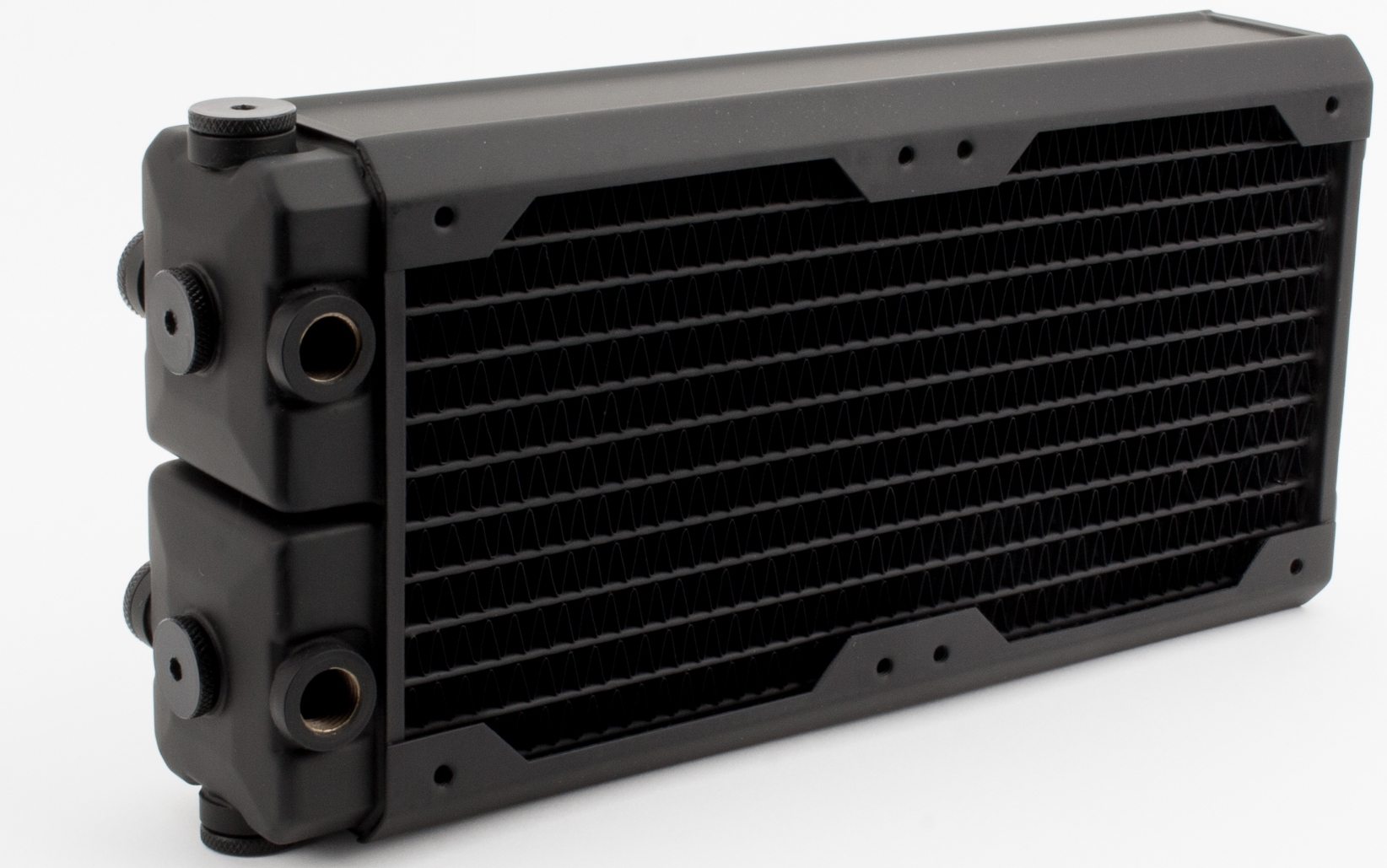
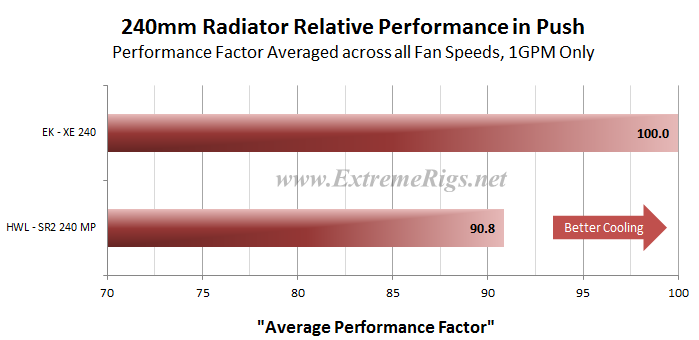
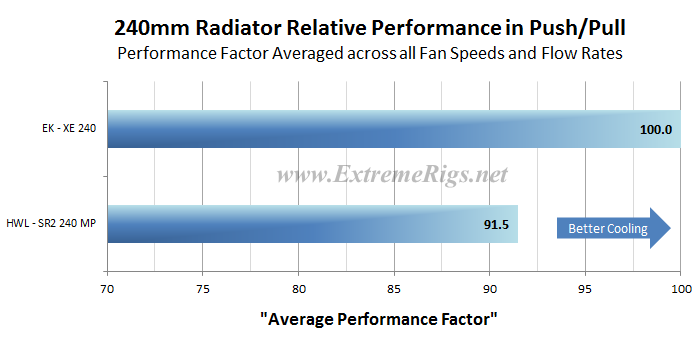
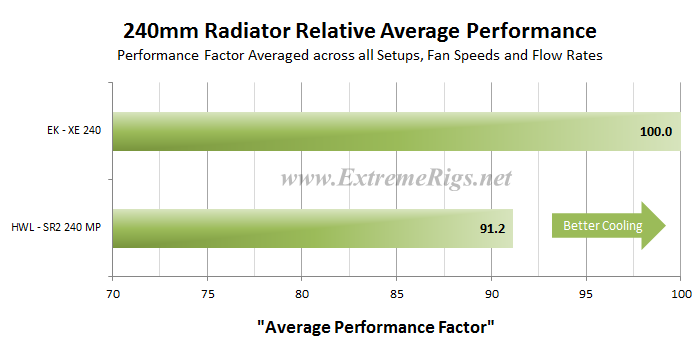
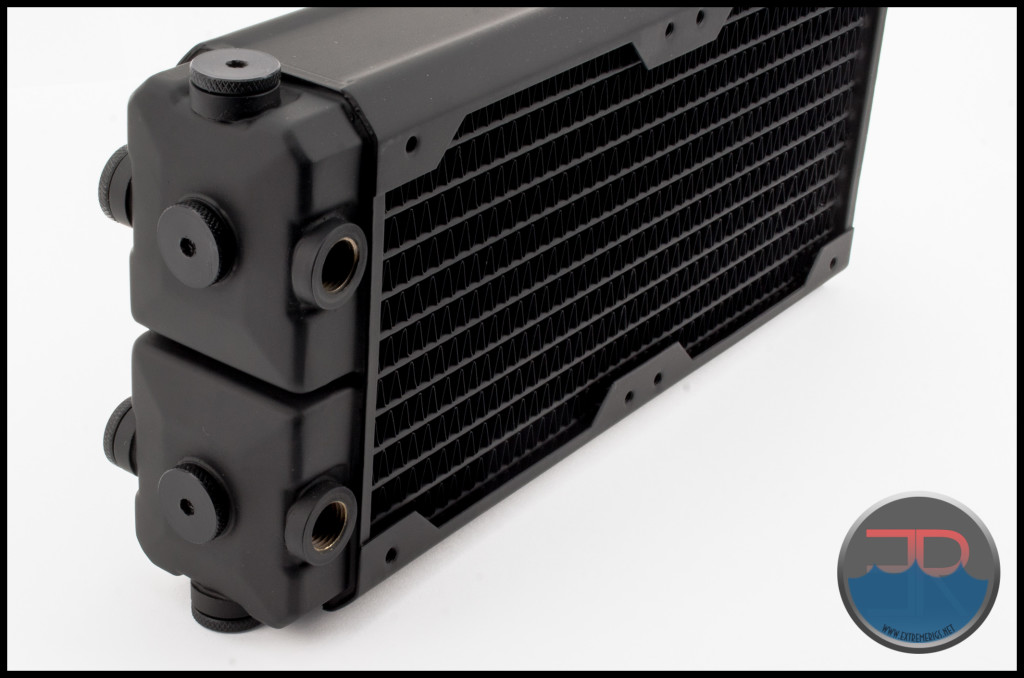

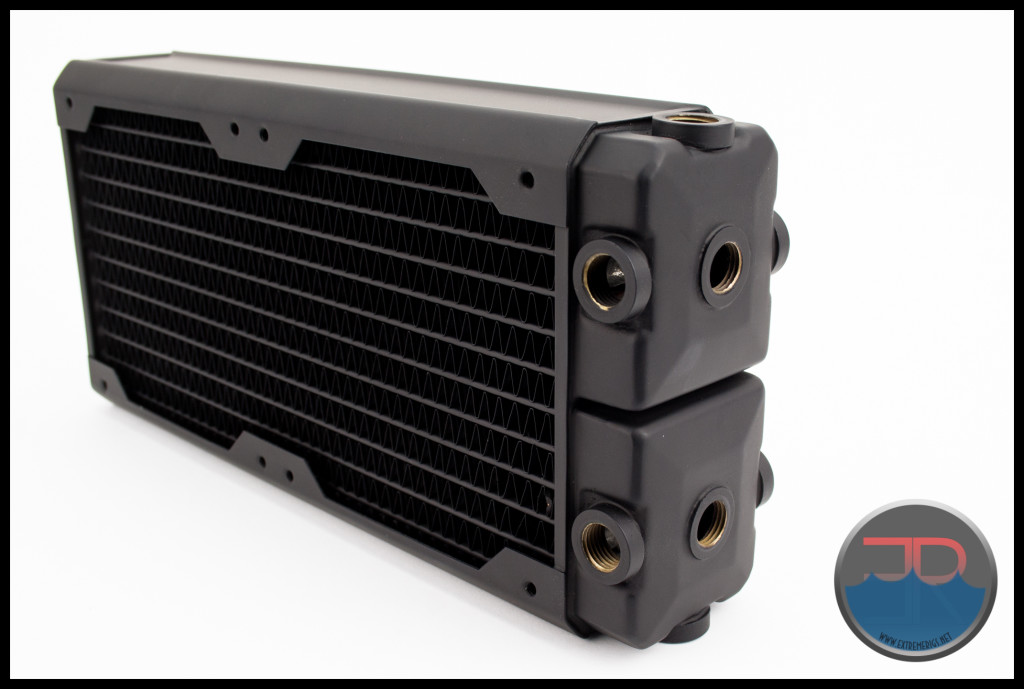
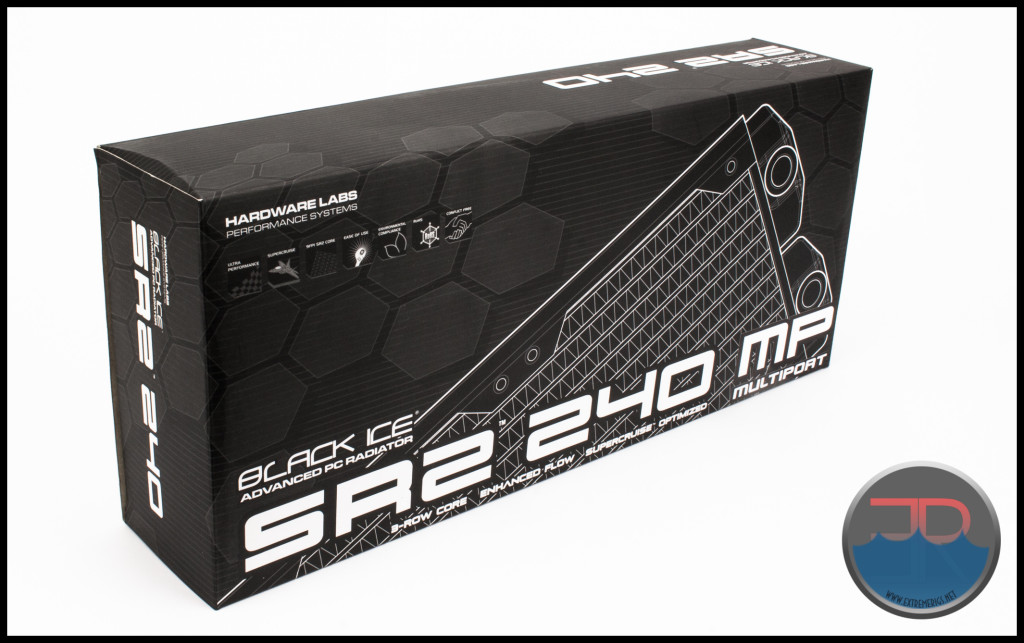




Maybe slightly disappointing thermal results, but not a deal breaker. Swarf in rad not a deal breaker either. Flexibility of ports, flexibility of use/fan rpms and overall quality mean that this is still a very good radiator. Again: great test. Now, please get more 240 results!
Often written or said in radiator reviews, “Since the XXX size of brand X radiator has shown XYZ level of performance, one should expect like performance from up-size XXX (or) down size XXX.” If the ratio of/comparable performance of the SR2 240 MP falls short of the SR2 360 MP, should we expect the 480 to provide an additional boost in performance over the 360 or similar performance to the 360? Given what the test results of the 240 tell us, how can an answer to either possibility be justified?
Not sure quite what you’re trying to say Questors – can you explain again?
The 240 performs at about 70% of a 360 when using an equal heatload. However it is running more efficiently as an equal heatload equates to a higher delta T. The 240 *should* of course be 66% of the the 360 and I do believe that it would give us that result if we kept a constant delta T instead of a constant heatload.
So to answer the question – should the 480 provide an additional performance boost over the 360? Absolutely – yes it should. As to how much – we would expect the ideal 33% more cooling ability when measuring a constant delta T, however for a constant heatload you would some efficiency because the delta T would be lower. So to guess – somewhere between 25-30% better cooling.
Does that answer the question?
This was the basis for me asking the question: “However, the thermal Test conditions did not favor the 240mm variant quite as well as the 360mm. The consistency was still there but performance was weaker when compared to the same competitor.”
To me this meant the performance of the SR 240 vs the XE 240 was less proportionate to the SR2 360 results against the XE 360.
Your response clears things up for me – “a constant delta T instead of a constant heatload”
[…] EK XE 240 Radiator Hardware Labs SR2 240 Radiator […]
Comments are closed.